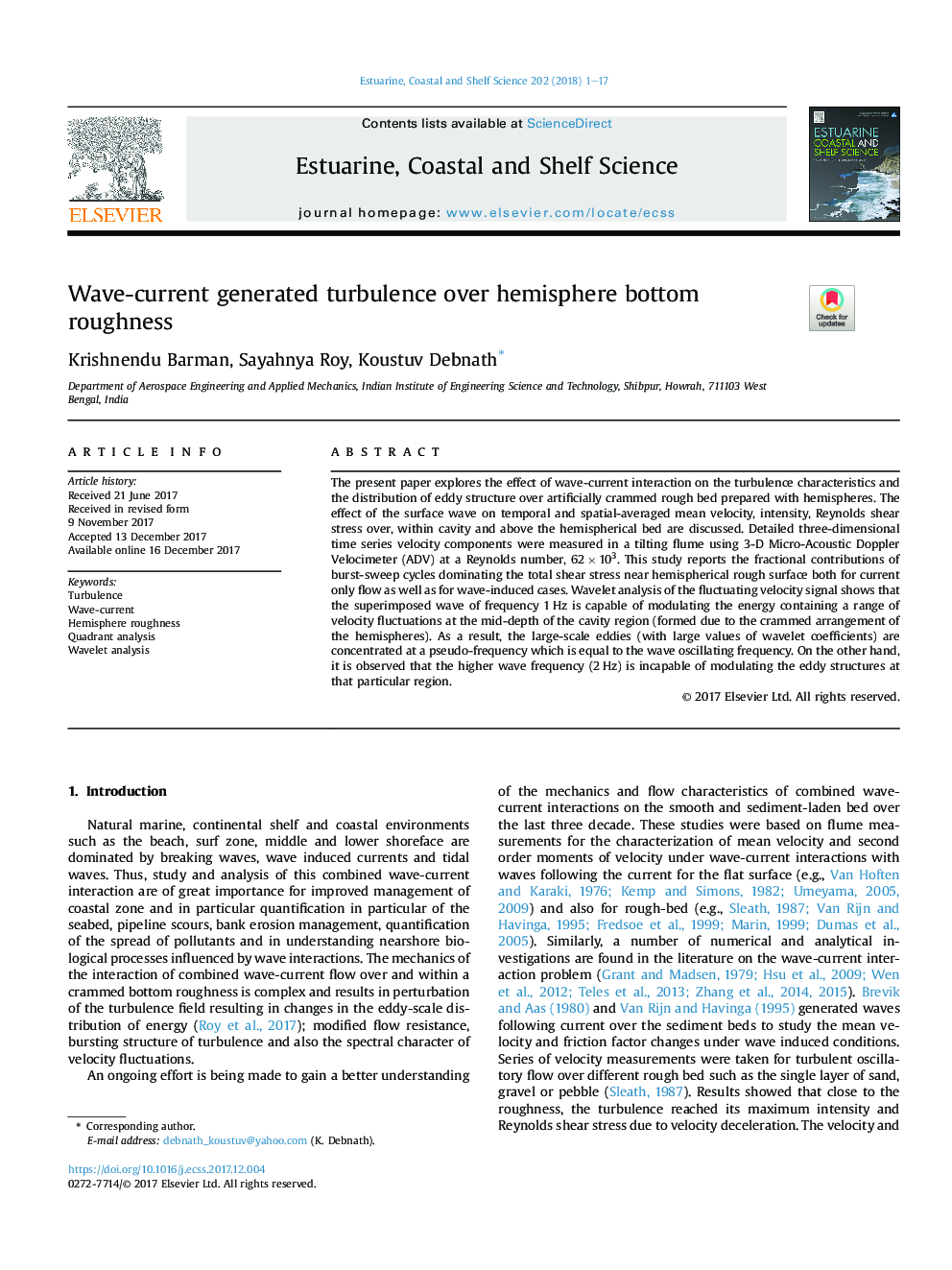| Article ID | Journal | Published Year | Pages | File Type |
|---|---|---|---|---|
| 8884983 | Estuarine, Coastal and Shelf Science | 2018 | 17 Pages |
Abstract
The present paper explores the effect of wave-current interaction on the turbulence characteristics and the distribution of eddy structure over artificially crammed rough bed prepared with hemispheres. The effect of the surface wave on temporal and spatial-averaged mean velocity, intensity, Reynolds shear stress over, within cavity and above the hemispherical bed are discussed. Detailed three-dimensional time series velocity components were measured in a tilting flume using 3-D Micro-Acoustic Doppler Velocimeter (ADV) at a Reynolds number, 62â¯Ãâ¯103. This study reports the fractional contributions of burst-sweep cycles dominating the total shear stress near hemispherical rough surface both for current only flow as well as for wave-induced cases. Wavelet analysis of the fluctuating velocity signal shows that the superimposed wave of frequency 1â¯Hz is capable of modulating the energy containing a range of velocity fluctuations at the mid-depth of the cavity region (formed due to the crammed arrangement of the hemispheres). As a result, the large-scale eddies (with large values of wavelet coefficients) are concentrated at a pseudo-frequency which is equal to the wave oscillating frequency. On the other hand, it is observed that the higher wave frequency (2â¯Hz) is incapable of modulating the eddy structures at that particular region.
Related Topics
Physical Sciences and Engineering
Earth and Planetary Sciences
Geology
Authors
Krishnendu Barman, Sayahnya Roy, Koustuv Debnath,
